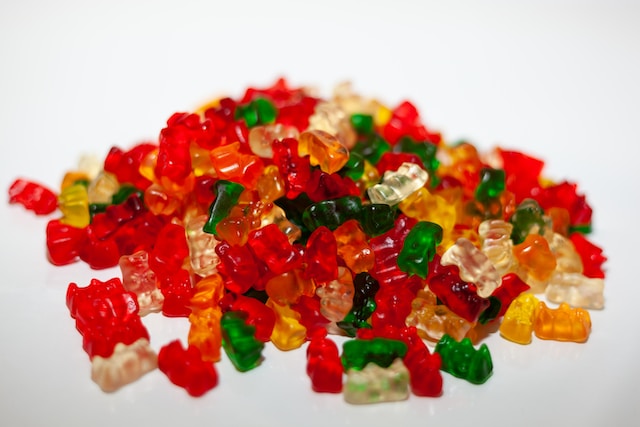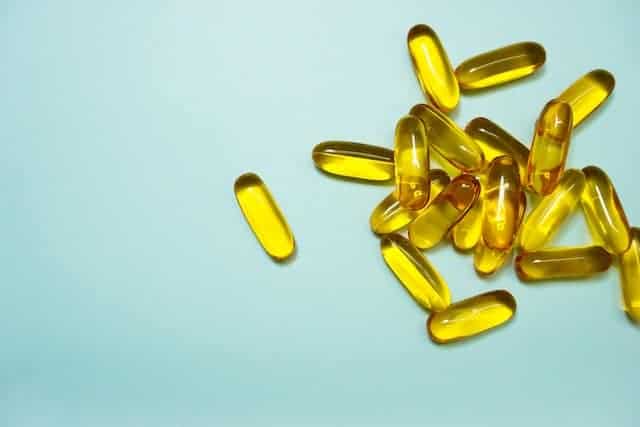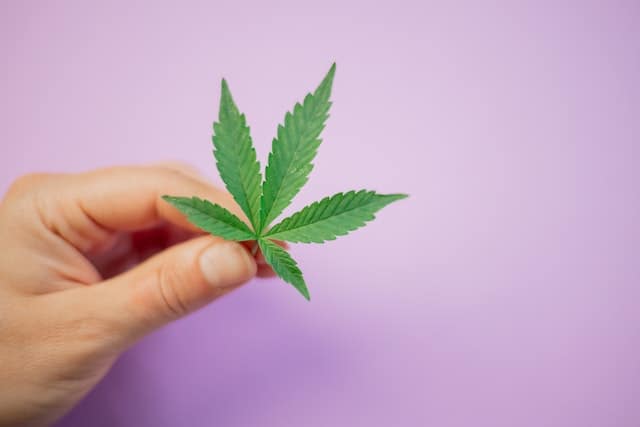You’ve likely heard of CBD by now, and maybe you have even tried it! There is no doubt CBD is buzz world in health and wellness these days. But what actually is CBD and what are all of its potential benefits? Let’s break down what CBD is, its potential health benefits and what form of CBD may be best for you to try. Knowing the basics of CBD can help you make an informed decision when it comes to trying CBD for the first time or finding a product that will help you the most.
What Is Cannabidiol?
CBD, also known as cannabidiol, is one of many naturally occurring compounds, or cannabinoids, found in hemp and cannabis plants. Cannabidiol was discovered in the 1940s and is one of nearly 120 cannabinoids currently identified. CBD is one of the more commonly known cannabinoids, alongside its cousin THC, which is most closely associated with marijuana for its psychoactive properties. CBD differs from THC in many ways, with a primary difference surrounding CBD not creating a “high” feeling like THC.
Cannabidiol can be crafted into products like edibles, oils and topicals. Through early stage scientific and clinical research, CBD is thought to aid in conditions or ailments like stress, anxiety, pain and inflammation, sleep, even cancer and epilepsy.
How Does CBD Work?
CBD works directly with the human body’s endocannabinoid system, or ECS. The endocannabinoid system was discovered in the 1990s and is still being researched for all of its functions and interactions throughout the brain and body. As of today, experts know the ECS impacts several bodily functions like sleep, appetite, mood, immunity, pain and memory. There is much more to be discovered about the ECS, but it is largely made up of three components: enzymes, receptors and endocannabinoids.
Endocannabinoids refer to endogenous cannabinoids or molecules naturally made by your body that help to maintain internal balance and function. Receptors throughout the body and ECS bind with endocannabinoids, and enzymes – which appear in many forms – work to break down endocannabinoids.
There are two types of cannabinoid-receptors in the ECS that interact most closely with CBD: the CB1 and CB2 receptors. CB1 receptors are predominantly found in the central nervous system and are responsible for functions like appetite, mood, coordination, pain management and memory. The CB2 receptors are found in the peripheral nervous system, responsible for managing inflammation and pain. CBD can also interact with non-cannabinoid receptors like the TRPV1 and 5-HT receptors, which also contribute to dealing with pain and inflammation and the production of serotonin.
Once non-endogenous cannabinoids like CBD enter the ECS and are broken down by enzymes, functioning as endocannabinoids, they look to bind with receptors. CBD’s ability to activate and influence these receptors is what researchers believe allows for the wide-ranging potential health benefits of cannabidiol. There is even the theory of the “entourage effect,” which could mean the more cannabinoids the better.
What Is the Entourage Effect of CBD?
Simply put, the entourage effect associated with CBD refers to its heightened effectiveness when combined with other cannabinoids. There are over 120 compounds that naturally occur in cannabis and hemp plants, meaning CBD has many cannabinoid cousins apart from just THC. All of these cannabinoids have a different interaction and impact on the ECS, so when more cannabinoids are taken in conjunction, their effect could be heightened.
Though CBD may be the most widely known cannabinoid from a wellness standpoint, it can benefit from the support of other cannabinoids. By combining the use of other cannabinoids with cannabidiol (CBD), the performance and interaction with the ECS could be positively increased. For this reason, many people have been turning to broad and full-spectrum CBD products.
While CBD interacts with the receptors in the ECS, it does not necessarily bind with them. In contrast, there are many cannabinoids that do bind with receptors. So, when taken in conjunction, other cannabinoids can bind with receptors in the ECS located in both the central and peripheral nervous system, boosting CBD’s interaction with the endocannabinoid system (ECS).
Effects & Benefits of CBD
The non-psychoactive properties of CBD could make it ideal for therapeutic use in a wide variety of areas. There is an FDA-approved CBD based medication for the treatment of epilepsy, and CBD is thought to be useful in areas like anxiety and stress relief, depression and PTSD, physical ailments like muscle soreness or injury, and even cancer treatment, addiction and withdrawal symptoms, among other things.
In one pre-clinical study focusing on CBD’s ability to treat anxiety disorders, the results were promising in the direction of CBD having a positive impact on serotonin levels and an elevated sense of well-being and relaxation. In another study focused on CBD’s ability to manage difficult to treat inflammation and pain, CBD showed beneficial in reducing and managing long-term pain caused by a variety of chronic conditions or injuries, like arthritis.
Overall, though more scientific research is needed to fully understand the scope of CBD’s potential benefits, there is promise in the direction of CBD aiding in a variety of health and wellness aspects. One of the best ways to ensure you get use out of your CBD, is to purchase a high-quality CBD product crafted with care, purity and quality in mind.
Some Popular Forms of CBD
CBD Oil & Tincture – CBD oil is one of the most popular and reliable methods of consumption. Taking CBD sublingually allows it to enter the bloodstream quickly, delivering relief fast. CBD tinctures and oils can be consumed by placing a dropper full of oil beneath the tongue, allowing it to “absorb” for a minute before swallowing. CBD oils and tinctures are an effective method of delivery for CBD, with a variety of benefits. Consuming CBD orally can aid in pain relief, stress management, insomnia, etc. by quickly delivering cannabidiols therapeutic properties to interact with the ECS (endocannabinoids system). CBD oils and tinctures can typically be dosed simply by using the dropper bottle, and more can be consumed as necessary.
CBD Topicals – CBD topicals are an effective method of delivering for targeted relief. Topicals are applied directly to the skin, allowing for specific area and ailments to be focused on. CBD topicals are most commonly used for pain relief and inflammation regulation. CBD topicals come in a variety of forms, from creams to salves to balms. When it comes to CBD topicals, the milligram amount of active CBD will have an impact on its effectiveness, the higher the milligrams the more effective. CBD topicals can be used by just about anyone, from athletes aiding a recovery routine, to senior citizens suffering from arthritis, chronic pain or joint stiffness. When applying a CBD topical, simply rub it into the affected area, repeating as necessary.
CBD Edibles – When it comes to CBD edibles, there are countless options available. One of the most popular being CBD gummies. CBD edibles deliver the active ingredients somewhat indirectly to the bloodstream. The CBD edible must be broken down by the body to absorb the therapeutic properties, meaning edibles may not deliver immediate relief. CBD edibles are ideal for those who are concerned with the “hempy” taste that can sometimes accompany oils and tinctures. CBD edibles come in a multitude of forms, from CBD gummies to drinks to oral strips and more, a great option for anyone new to the world of CBD.
CBD Smokables – Another popular way to consume CBD that is more on the rise is through CBD hemp strains. These hemp strains are grown in similar ways to cannabis, but these plants gave a low THC threshold, keeping them in line with 2018 Farm Bill. CBD smokables can come in the form of hemp strains, pre-rolled joints and even CBD vape pens. CBD inhalable products are great for quick effects that can wear off faster than some other forms of consumption. As with anything we inhale, making sure you have a reliable source of CBD is key to reaping the benefits of an inhaled product.
Not All CBD Is Created Equal
When it comes to finding the best CBD product for you, the first thing to consider it what you are trying to treat. Different methods of consumption and or application can be more effective for different issues. The next most important factor to consider is the quality of your CBD product. Not all CBD is created equal. It’s important to find high-quality CBD products that are verified by independent lab test results. CBD is still in the early stages of research, meaning a reliable source is key to its effectiveness.
Turn to Real Tested CBD for all the most transparent industry reviews and independent lab test results. We test a wide variety of products from CBD companies large and small, checking for label claim accuracy as well as quality of the product from pesticide and solvent use to potency, purity and quality. Check out some of our product guides here, and always rely on Real Tested CBD for bringing the transparency in the CBD industry directly to you.
Most Recent Tested products

















Leave a Comment